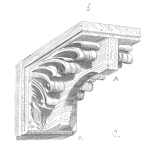
Why are Weibull, lognormal, and exponential distributions more appropriate than others for modeling failure distributions?
In this article, I want to show you why Weibull, lognormal, and exponential distributions are more appropriate than others for modeling failure distributions. Instead of starting from the explanation of the most used fitting distributions in reliability engineering, I will begin with the analysis of artificial datasets created assuming specific failure behaviors. In other words, I will start from the data and not from the statistical distributions. I think that this approach can help those who deal with this topic for the first time.
[Read more…]

